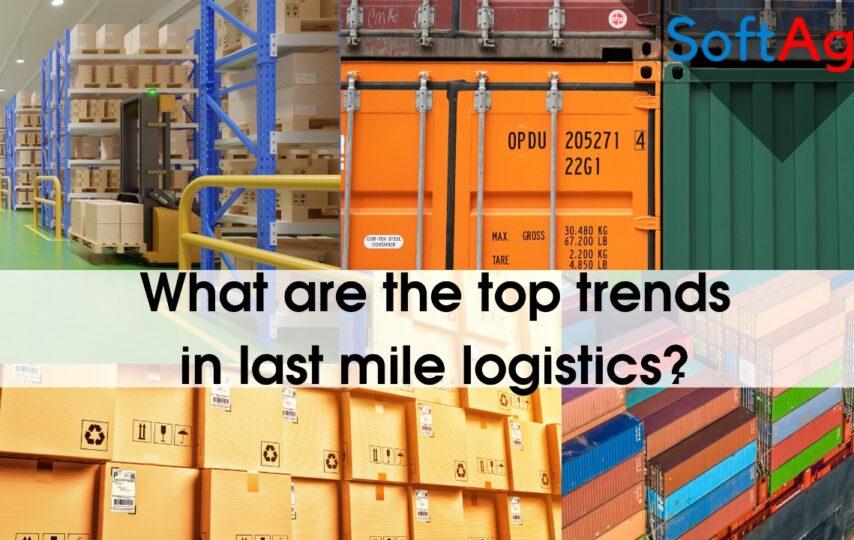The most crucial stage of a supply chain is the last mile logistics. And yet it takes enormous resources and time to achieve this last leg of the delivery process. The financial difficulties that accompany last mile logistics present roadblocks for small businesses to provide their customers with timely deliveries.
Yet tapping into the technology sphere, as with any market problems, poses tremendous possibilities for solutions. The hybrid between technology and logistics gives birth to technologies that change the way things are transported from one location to another.
Innovations in last mile logistics in India, like the eventual access to technology to the masses, make it easier for companies to map their path to profitability.
- FASTER COMPLETION
Owing to an increase in on-demand same-day delivery, there is a focus on logistics and fulfillment. For these types of exports, businesses are witnessing a significant rise in customer demand. Deliveries that you usually had an hour of preparation for now have to be ready in minutes, which present planning challenges.
Pharmaceuticals and food distribution are examples. Customers want a few hours of delivery time. It has to be processed and ready to go by the time the order arrives, to hit the small window.
- GIG ECONOMY AND APPLICATIONS FROM CROWDSOURCING
There is no better way than looking at venture capital pouring into the last mile delivery logistics services in India and urban logistics industries to illustrate the boom of the gig economy and crowdsourcing apps. In 2015, the supply chain and logistics start-up venture capital investments quadrupled those of the previous year.
Deliveries from independent vendors are offered from companies such as UberRUSH for deliveries, Postmates, Deliver, and even Amazon Flex. In their applications, businesses publish deliveries to alert drivers to open work.
It is not as effective to collect and transport ad hoc as to transport anything on which you have solid route management, with an available truck that knows where you are going. But technology is becoming more advanced, and this can be achieved by those with a car (or even a bicycle) who want to earn additional income.
Such networks are of restricted geographical scope and not yet as common as conventional operators.
Corporations focused on information and technology, not assets such as cars, are participating in venture capital funds. They concentrate on businesses that use research and data to find out how to do the job for less cash, and to take advantage of the overcapacity of drivers with their vehicles.
- CENTERED VISIBILITY
Traditional carriers, with evidence of distribution and track records, have enhanced traceability. Regional and local distribution companies often don’t have the infrastructure to provide the data for the last mile.
Thus, it ends up being a little chaotic to interact with these firms. In last mile deliveries, traceability and other tracking data are very important, particularly if a package is delayed or lost. But everything has been made much easier with smartphones.
The customer will see where the driver or package is, thanks to GPS monitoring. This allows for quick deliveries at the point of delivery with traceability and signature capture.
While in all respects the method is not yet standardized, customers will eventually expect the industry to step in this direction.
- EVOLVES THE POSTAL SERVICE
Little by little, conventional carriers such as the Post Office are evolving and growing. Increases in e-commerce package delivery could not come at a better time, considering the decline in conventional letters and mail delivery.
It’s just an extra expense to the courier company to add an item to home delivery since the carrier goes home anyway. For UPS or FedEx, it is more costly to make the same delivery as you have to make a separate stop.
- SUBCONTRACTING DELIVERY
For last mile logistics solutions, more and more businesses are using their own or shared cars, and that involves Amazon. Some 3PL businesses now also have local delivery systems of their own. They have their cars and drivers on payroll, not long-distance, for local deliveries.
- WAREHOUSES FROM CITY
For customers seeking same-day, instant delivery, there were at least 58 Amazon Prime Now fulfillment centers in the U.S. last year. The growing trend is for companies to build on this urban warehouse space or take advantage of it and have quick access to goods for fast deliveries to customers.
That is the only way the speed of delivery or transit time can be decreased. Amazon’s delivery in two hours is unparalleled and that’s what disturbed the industry, which is trying to get as close to this aspect as possible.
Amazon has the benefit of being first in the industry, and other distributors are trying to catch up.
- SELLER BECOMES CARRIER
Thanks to Big Data, even though they have not ordered it, retailers can anticipate what more a client might want. It is gaining strength in the mobile warehouse model. The fulfiller will load inventory onto delivery trucks, enabling drivers during the delivery process to maximize sales.
Just as Amazon shows consumers additional goods they would want during the checkout process, by processing a potential additional order in person, the courier may carry things that the buyer has purchased in the past or may need or like. In the food industry, as well as the household goods market, or even fashion, this can work very well.
- SENSORS AND INTELLIGENT TECHNOLOGY
Customers want to monitor temperature-sensitive goods, in addition to having to manage any aspect of the fulfillment and distribution process.
In the packages themselves, probes and tracking equipment are already mounted. In this way, at each stage, the pharmaceutical firm, frozen foods, or producers of alcoholic beverages will know the temperature of the probe and probably the humidity level. This is becoming a norm for the industry.
Weather data is used by distribution centers for preparation and to incorporate additional packaging materials to monitor the temperature change. If they know that they are shipping in mid-August to southern Spain and the temperature will be 37 ° C, they can add dry ice or packaging that can handle the heat better. If this is finished, carriers use gathered data to calculate a suitable path.
- DELIVERY BY VEHICLES, DRONES, AND ROBOTS
They are not yet a trend, although these futuristic delivery options are being developed and tested. But be alert, because sooner or later, they’ll arrive.
The game would change drastically if packages can be transported by stand-alone vehicles or drones. Deliveries are currently constrained by the cost of labor, availability, and shifts. Robotic distribution can be conducted 24 hours a day. Due to regulatory and technical issues, however, drone deliveries could have restricted use in highly urbanized areas.
CONCLUSION:
The benefits of faster fulfillment increased inventory turnover, and decreased dependency on warehouses is branched out by the factor of sharing the economy alone. Softage.net the last mile delivery company in India is at the forefront of these top trends in last mile logistics, relying on a network of drivers.
Softage.net also integrates GPS into its app in addition to the human factor of the sharing economy to enable tracking in real-time. To establish a transparent relationship between companies and customers, full point-to-point traceability, as mentioned, is essential.








